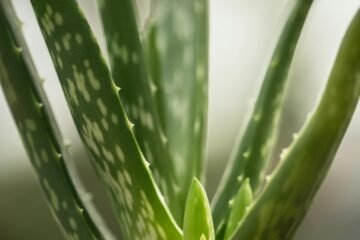Alocasia plants, with their striking foliage and exotic appeal, are a favorite among plant enthusiasts. Propagating Alocasia can be a fulfilling way to grow your collection and share your passion. In this post, I’ll cover three common methods of propagating Alocasia: by division, from corms, and using stem cuttings. I’ll also share some mistakes I’ve made along the way so you can avoid them.



Propagation by Division
What You’ll Need:
A mature Alocasia plant
A sharp, sterile knife or pruning shears
New pots with well-draining soil
Gloves (optional)
Steps:
Prepare Your Plant: Water your Alocasia a day before you plan to divide it. This makes the process less stressful for the plant.
Remove the Plant from the Pot: Gently remove the Alocasia from its pot. If it’s stuck, you can tap the sides of the pot or use a knife to loosen the soil around the edges.
Separate the Rhizomes: Carefully separate the root ball. Look for natural divisions where the plant has multiple stems or shoots. Using your hands or a sterile knife, divide the plant into sections, ensuring each section has at least one stem and a healthy root system.
Repot the Divisions: Plant each division in a new pot with fresh, well-draining soil. Water thoroughly to help the plants settle in.
Common Mistakes and Tips:
Overwatering After Division: I made the mistake of overwatering my divisions, which led to root rot. Keep the soil lightly moist, not soggy.
Not Providing Enough Humidity: Alocasias love humidity. Using a humidity tray or misting the plants regularly can help them thrive.
Propagation from Corms





What You’ll Need:
Mature Alocasia plant with visible corms (small bulbs)
A sharp, sterile knife
Pots or seed trays
Well-draining soil mix
Steps:
Identify and Remove Corms: Gently dig around the base of your Alocasia to find the corms. These are small, bulb-like structures that develop around the roots. Carefully remove a few corms using your fingers or a knife.
Prepare Corms for Planting: If the corms have sprouts, plant them directly in soil. If not, you can soak them in water for a few days until they begin to sprout.
Plant the Corms: Place the corms in a pot or seed tray filled with a well-draining soil mix. Cover lightly with soil and water them well.
Provide Proper Care: Keep the soil moist but not soggy. Place the pot in a warm, humid location with indirect light. In a few weeks, you should see new growth emerging.
Common Mistakes and Tips:
Planting Corms Too Deep: I once buried the corms too deep, which delayed sprouting. Cover them lightly with soil, just enough to keep them in place.
Neglecting Moisture: Corms need consistent moisture to sprout. Keep the soil evenly moist but avoid waterlogging.
Propagation by Stem Cuttings





What You’ll Need:
A healthy Alocasia plant with long stems
A sharp, sterile knife or scissors
Rooting hormone (optional)
A pot with well-draining soil or water container
Steps:
Choose a Healthy Stem: Select a stem with at least one node (a bump where leaves emerge). Make a clean cut below the node.
Optional – Use Rooting Hormone: Dip the cut end of the stem in rooting hormone to encourage root growth.
Plant or Place in Water: You can either plant the cutting directly into a pot with well-draining soil or place it in a container of water. If using water, make sure only the node is submerged, not the leaves.
Monitor and Care: If planted in soil, keep the soil moist and provide indirect light. If in water, change the water every few days to prevent stagnation. Roots should develop in a few weeks, after which you can plant the cutting in soil if it started in water.
Common Mistakes and Tips:
Placing Cuttings in Direct Sunlight: I once placed my cuttings in direct sunlight, which caused them to wilt. Keep them in bright, indirect light.
Using Unsterilized Tools: Using unsterilized tools can introduce infections. Always sterilize your knife or scissors before cutting.
Final Tips
Patience is Key: Propagation can take time, so be patient and attentive to your plant’s needs.
Humidity: Alocasia plants thrive in high humidity. Consider using a humidity tray or misting the leaves regularly.
Indirect Light: Place your propagating plants in a spot with bright, indirect light for the best growth.
I hope this guide helps you successfully propagate your Alocasia plants!




0 Comments